I’ve never really seen the appeal of tandems, the poor old stoker sat at the back not able to see anything other than the pilot’s back, that was until we got a Hase Pino, quite possibly the strangest looking but most well-designed tandem there is.
The Pino is a semi-recumbent tandem, the stoker sits at the front on a recumbent seat, whilst the pilot is just behind in a standard bike configuration, the beauty of this design is that you share the same view, and your heads are close together, its easy to have a conversation even at speed.
We got our Pino second-hand this year for my daughter and I to ride, there are lots of great reviews already out there which I’ve listed at the end of the post. They are mainly aimed at long-distance touring. I haven’t seen any reviews for people buying the bike primarily for family recreation so here it is.

The cost.
The biggest issue with the Pino is the cost, a new Pino has a comparable cost to a small family car. At today’s prices, the non-electric motor version will set you back around £5000 for the base model, and the accessories aren’t cheap either. Initially, we started looking at the Circe Morpheus instead, an equivalent bike for around £3000, again this was for the base model and accessories soon started to ramp the price up beyond my budget.
So we turned to the second-hand market without much hope, these bikes are pretty niche and I didn’t expect there to be much available. I set up eBay alerts for both the Pino and the Morpheus. I haven’t had a single alert for the Morpheus, but Pino’s appeared at a fairly steady rhythm during the spring/summer of 2020, maybe the lockdown convinced owners they didn’t need them anymore?
What was clear from the second-hand market was that the bikes kept their value, I saw a 20-year-old Pino go for £2500, I didn’t feel confident this was going to be any better for my wallet. The big advantage, however, was that nearly all the second-hand bikes had already been accessorised with the things I considered essential, especially the kickstand, which was an additional £200 accessory when new. Many came with other extras that would be beneficial such as the front lowrider pannier rack, or kids cranks for the front seat.
After bidding unsuccessfully on a few, I finally got lucky with winning a bid on a 2-year-old Pino with stand and seatbelt for the recumbent seat. I couldn’t believe I won, it went for much the same price as the 20-year-old Pino mentioned earlier. I was very happy to get a relatively new bike in such good condition. The only problem was it was in Harrogate and I lived in Plymouth!
Transporting the Pino.
I had won the bike and needed to get 350 miles to Harrogate, it was the end of July 2020, Britain had just come out of lockdown, luckily that meant the roads were pretty quiet!
I travelled up in our campervan so I could save money by parking overnight in a truck stop (and to be honest I was a little Covid paranoid about staying in a hotel or b&b). I planned to transport the Pino back on my rear-mounted bike rack but I was worried about the width. The maximum vehicle width in the UK is 2.55 metres, and the Pino is 2.1 metres when the front boom is at its shortest. The van is only 1.9 metres wide, I was worried about the overhang on such a long journey.
I got to Harrogate and picked the bike up from a lovely family, the bike was immaculate, but I chickened out of loading it on the rear rack and instead put down the rock-and-roll bed in the van and loaded the bike on top, it just about fitted but it was a good job I travelled up on my own.
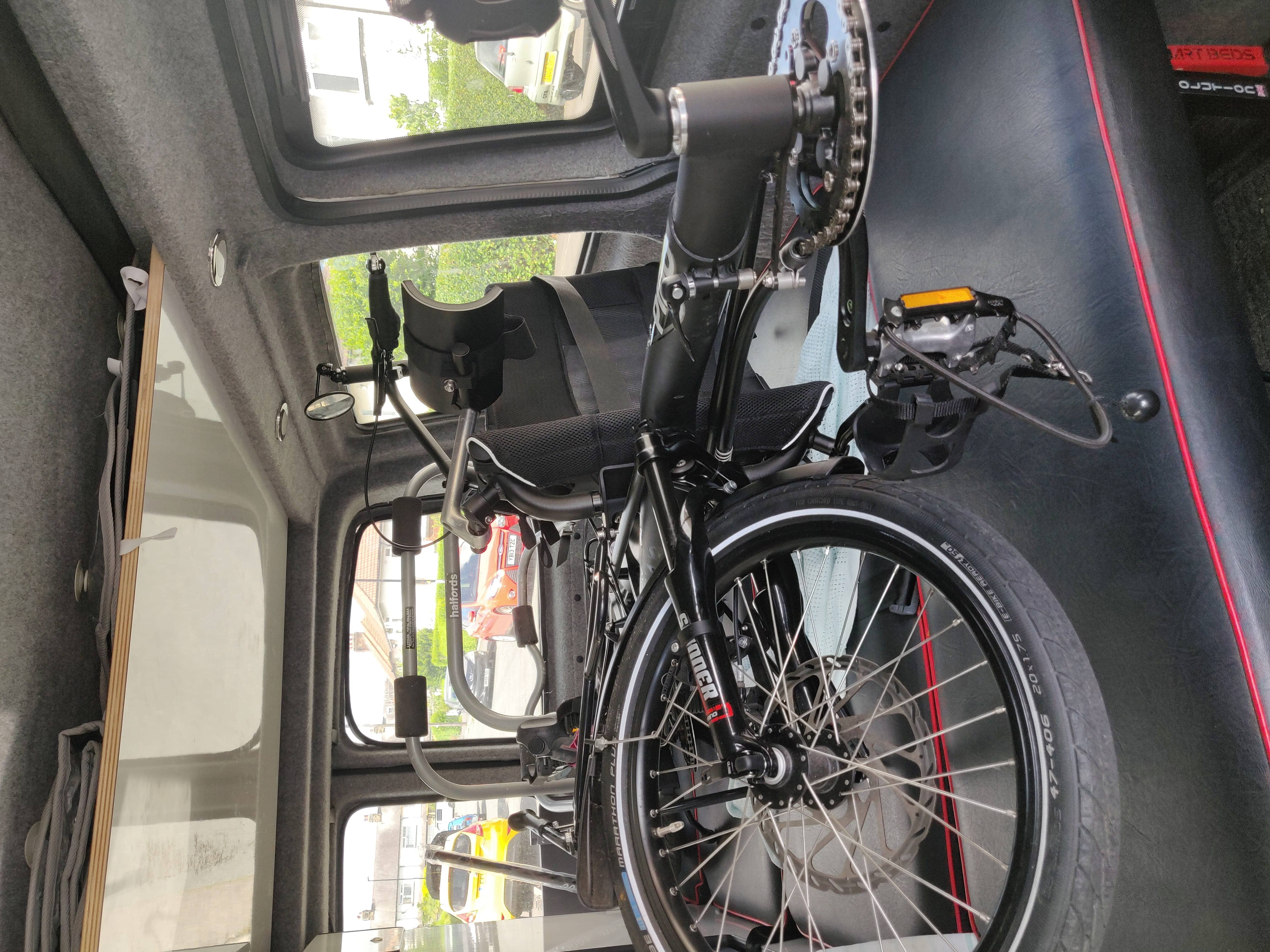
I have since summoned up the courage to transport the Pino on the rear rack, the furthest it has been is about 40 miles to Bodmin and it does overhang a lot! By taking it easy and with judicious width given on the left side on Cornish country lanes, we haven’t had any issues so far.
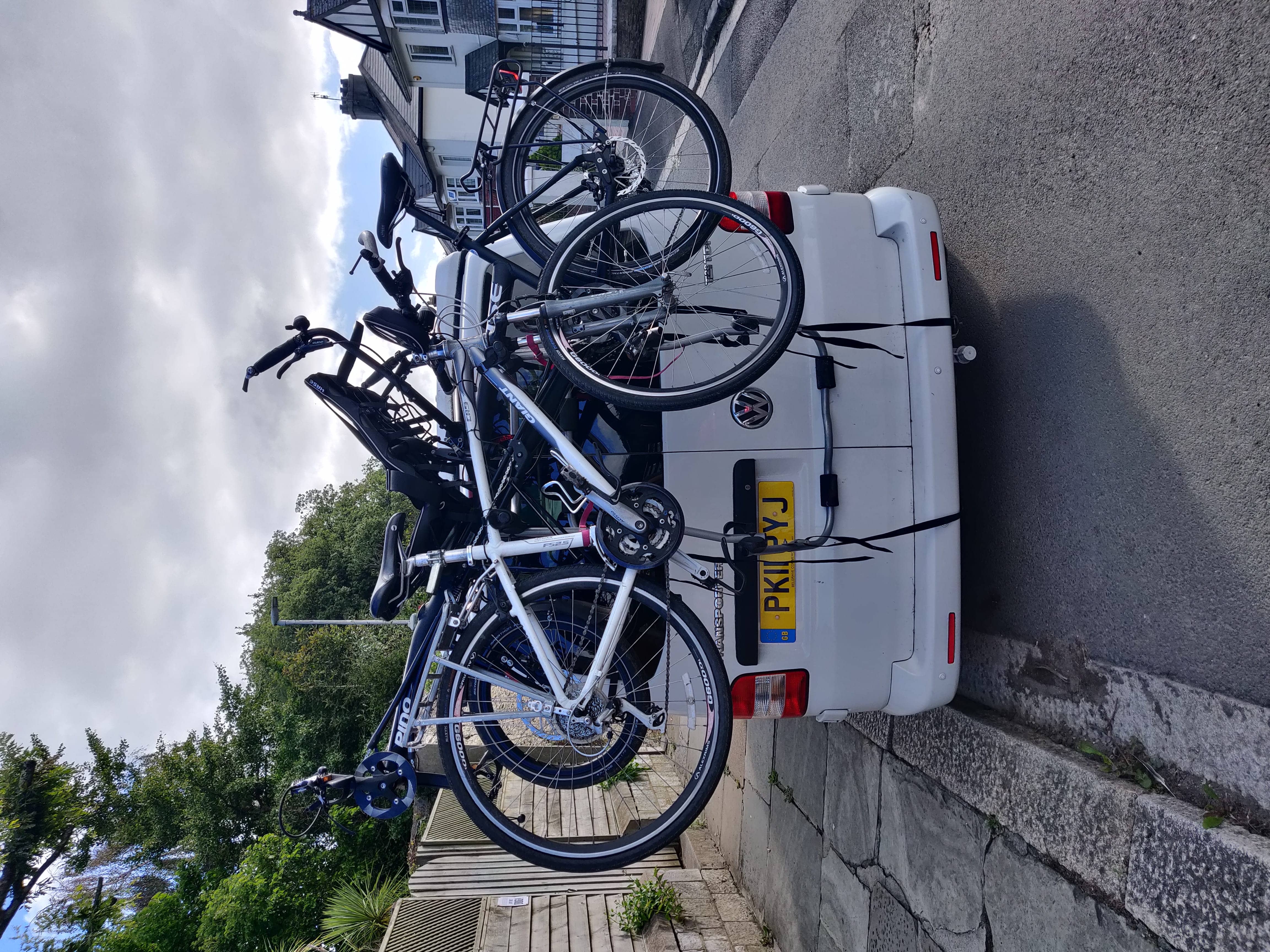
It is possible to split the Pino in half to aid transport, I haven’t done this yet, I’m not sure how much of a faff disconnecting the front chain and brakes would be.
What’s it like to ride?
The biggest thing you’ll notice when riding the Pino is the number of comments you get, it’s impossible to go out for a ride without hearing “Oh look at that”, “That’s cool” or “Who does all the pedalling?” its almost impossible to stop without ending up chatting to someone about it. On the whole, this is lovely but can get tiresome for Phoebe being the centre of attention all the time.
I’d read in a few articles that riding the Pino could take a bit of getting used to. the handlebars are quite wide apart, but I didn’t find this the case at all, in fact, I was amazed at how stable the Pino was. It always feels well-grounded when both of us are on it, even at high speed. I have ridden it a few times with no one in the stoker seat and that makes the steering a little twitchy as there is less weight over the front wheel, it is still manageable though.
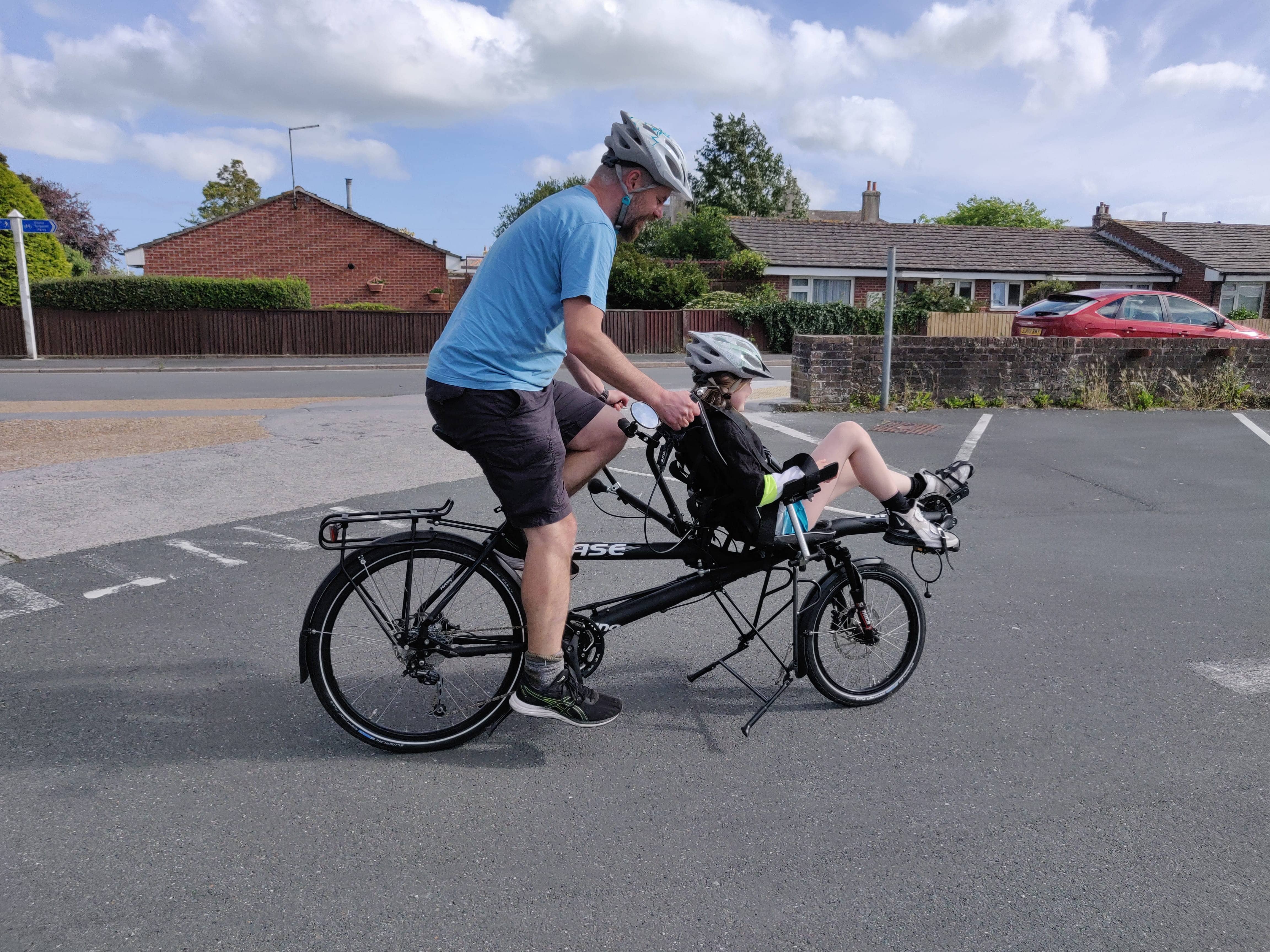
The Pino has hydraulic brakes which are phenomenal for stopping, we’ve had more than one small dog run in front of us at the last minute and have been able to stop easily. When we first got it, the front brake was sticking on which made cycling it really hard. After a service at Bikespace they’ve been fine and are still stopping us easily with no sticking 300 miles later.
A lot of Pino’s have hub gears, but ours has a whopping 29-speed derailleur. The rear derailleur is indexed, and the front isn’t, this works well given the amount of movement between the bottom and top gear you can adjust the front derailleur slightly to prevent annoying rubbing noises. Both are controlled by bar-end shifters mounted facing upwards on the pilot handlebars. The gearing is arguably not quite set right, we find ourselves in granny gear fairly often, however, we do most of our riding in Plymouth or on Dartmoor, both of which are steep! My daughter calls the top gear the stig gear, and when on the flat or downhill you can really get up a head of steam. Tandems are great for disrupting Strava segments!
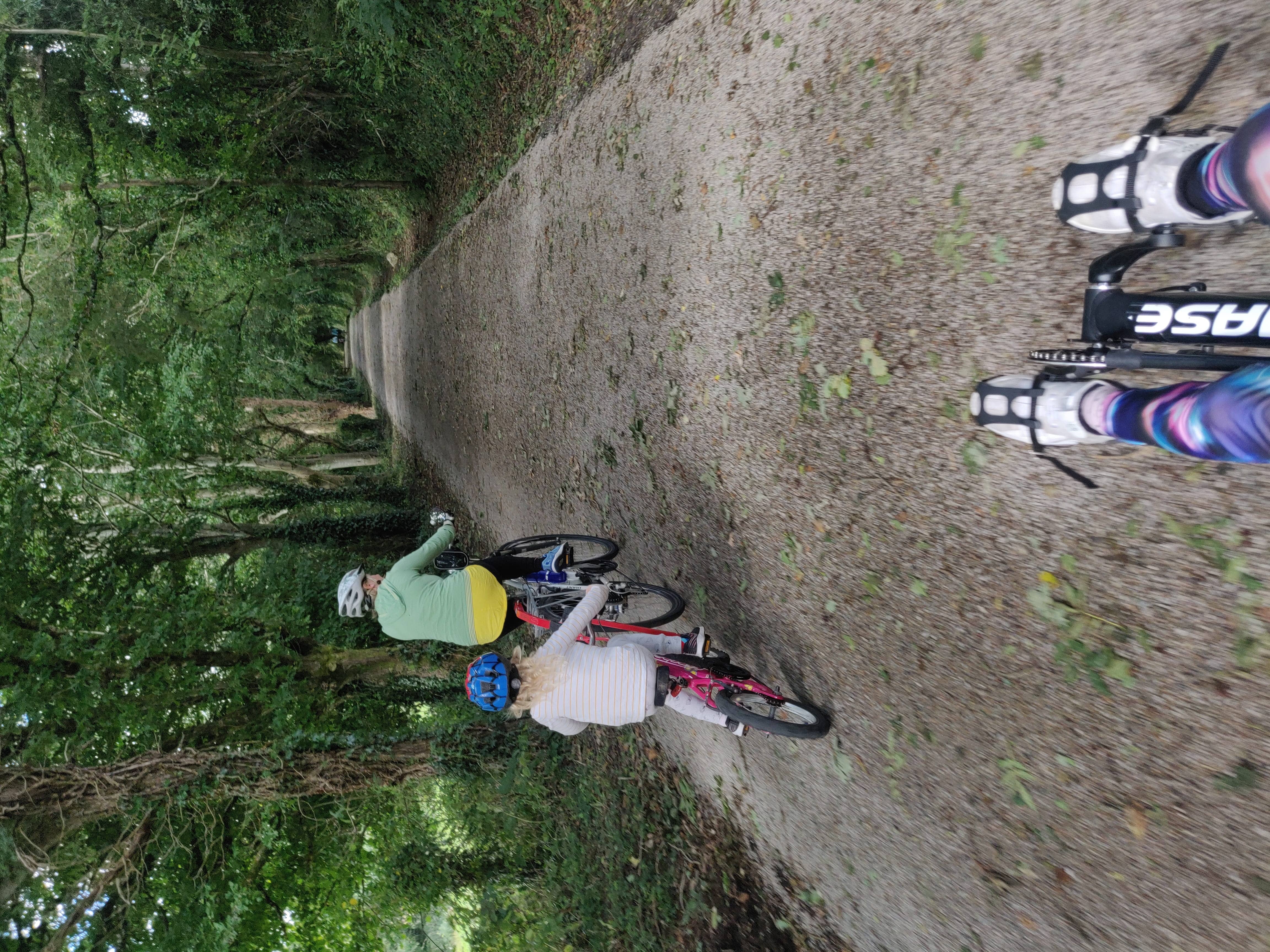
My daughter has never made any complaints about being uncomfortable on the recumbent seat, its a mesh design which dries quickly when it has rained, we have been on all-day rides with no problems. To help keep her feet in the pedals, we have special recumbent pedals that attach her feet to the pedals by use of a bungee cord behind her heels, these work fairly effectively, although it’s necessary to adjust the elastic after a while, we will probably replace these with SPD clips when her feet stop growing.
Another additional feature was the seat harness, whilst it’s not essential it gives Phoebe some confidence that she isn’t going to fall off, once again its an added extra accessory if buying new but we were fortunate that our’s came with it.

One of the best features is that the stoker can free-wheel independently, and the pilot can keep riding. This means if Phoebe gets tired she can take a break, whilst I can still ride.
We’ve only had a couple of issues:
I found with the handlebars were too far apart for long rides. My shoulders ached from my arms being so wide, it is possible to change the angle of the handlebars and bringing them in slightly improved this enormously and didn’t affect stability.
The front boom is adjustable which means the bike will still be usable as Phoebe grows. However it is currently on the lowest setting, and when making tight turns the wheel catches the pedals, I have to warn Phoebe I’m going to make a tight turn and she levels her feet out. Over time it won’t be an issue but its pretty sketchy when you forget and catch the wheel. It hasn’t caused us to crash, yet.
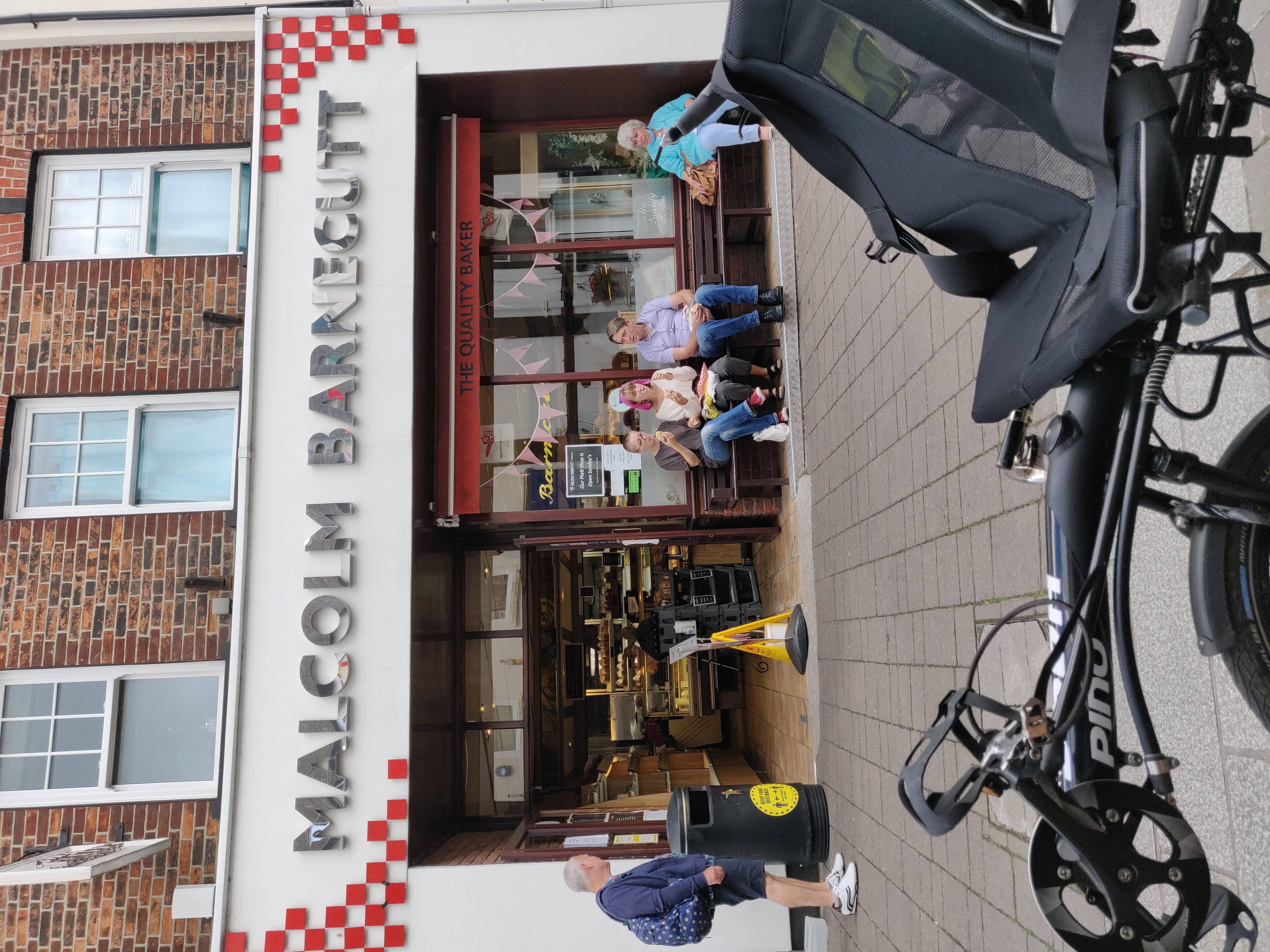
Maintenance and repair.
The Pino is reasonably simple to keep in good repair, the use of standard derailleurs definitely helps. It has the excellent Schwalbe Marathon tyres, which are claimed to be puncture-proof, so far that has been the case. The front chain is difficult to clean, but it is enclosed in a plastic tube for most of its length so it doesn’t get too dirty.
I’m not brave enough to muck around with the hydraulic disc brakes and I was worried about finding a bike mechanic that would be comfortable servicing it. I’m lucky that bikespace, my local mechanics sell cargo bikes that use much the same components as the Pino, they did a great job servicing it in the summer. Unfortunately, they don’t stock Pino parts, and I wanted to get the lowrider front pannier rack. I contacted Get Cycling in York, where the bike originally came from and they were able to ship it with no problems. This was reassuring as there are some specialist parts you can only get from Hase that will wear out eventually, such as the stoker’s crankset.
Accessories and adjustments.
As I mentioned at the beginning of the post, Hase accessories aren’t cheap, but there is one that I would say is an absolute necessity, that is the double kickstand. It is really sturdy and can support up to 100kg, it makes getting in and out of the recumbent seat so much simpler, and makes parking up easy.
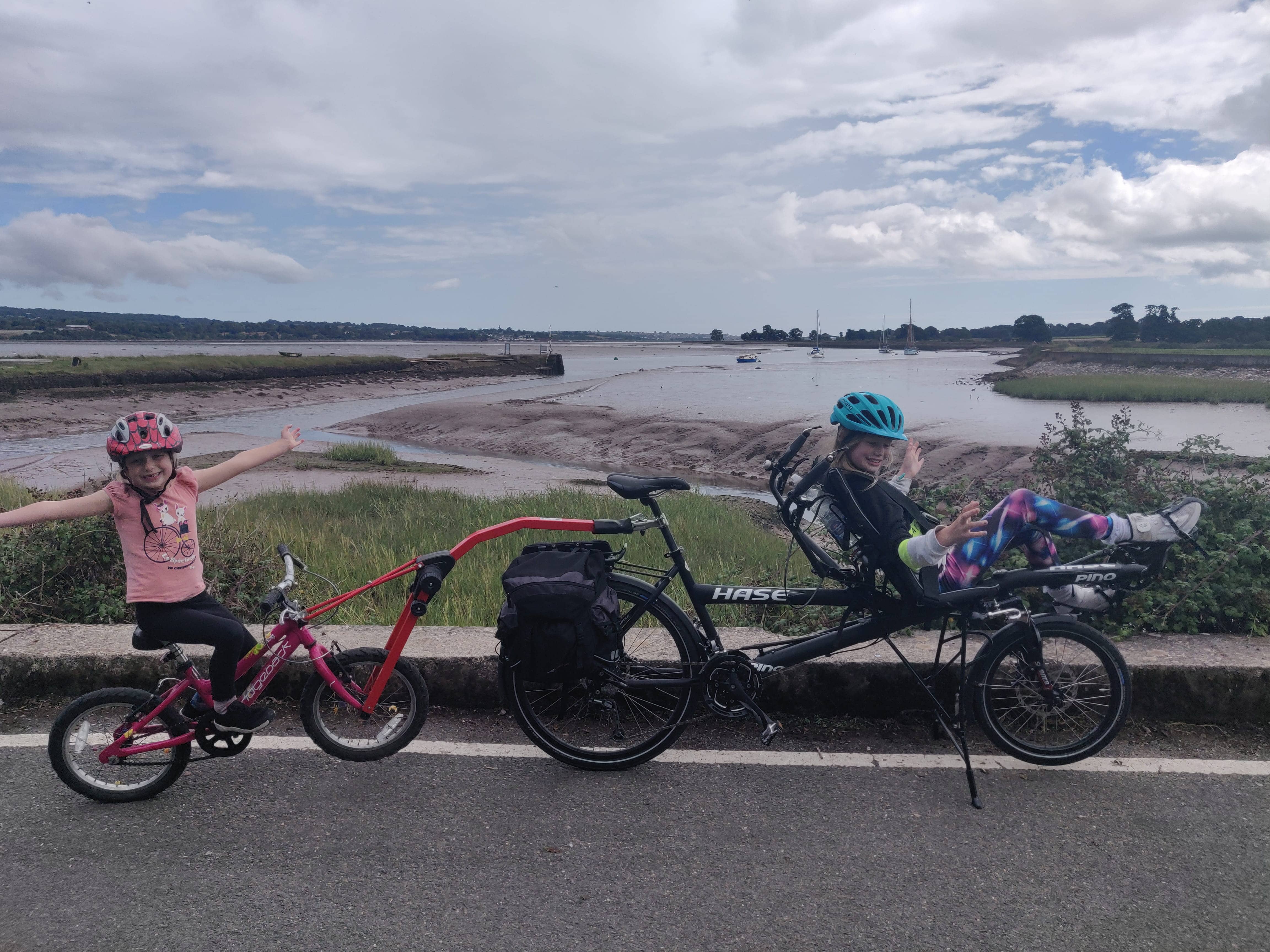
The only other official Hase accessory we have bought is the lowrider front pannier rack, it works with the kickstand to support a whopping 4 pannier bags. I got it to better distribute the weight from the back of the bike to the centre, and to give Phoebe the means to easily access stuff whilst we’re on the move.
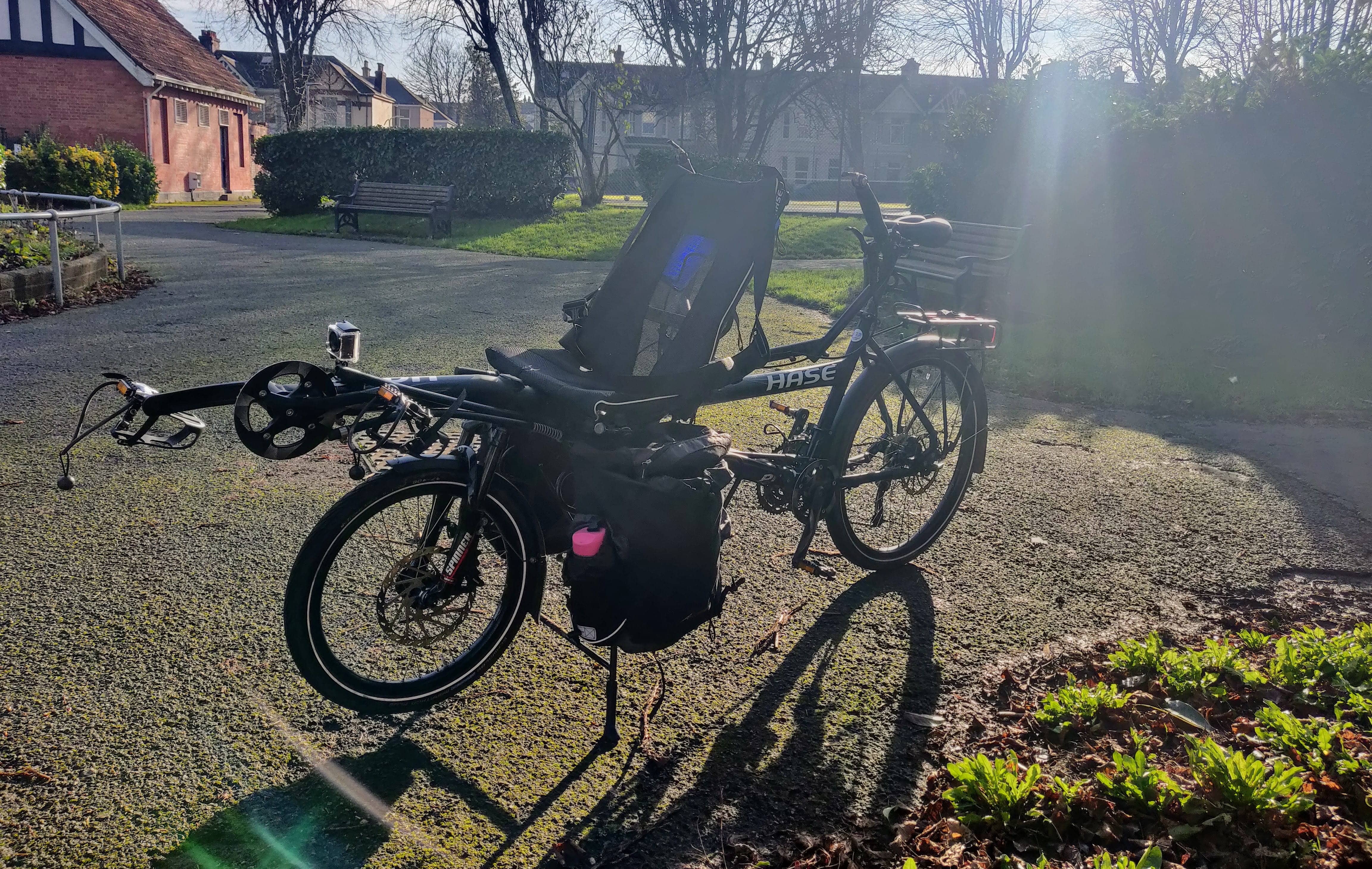 We have also made some non-proprietory adjustments, the bike only has mount points for one waterbottle, which is frankly ridiculous, my touring bike has three! We have worked around this by using Topeak cage mounts attached to the upright bars of the seat, there is just enough room to fit 2 additional water bottles and not hit my knees.
We have also made some non-proprietory adjustments, the bike only has mount points for one waterbottle, which is frankly ridiculous, my touring bike has three! We have worked around this by using Topeak cage mounts attached to the upright bars of the seat, there is just enough room to fit 2 additional water bottles and not hit my knees.
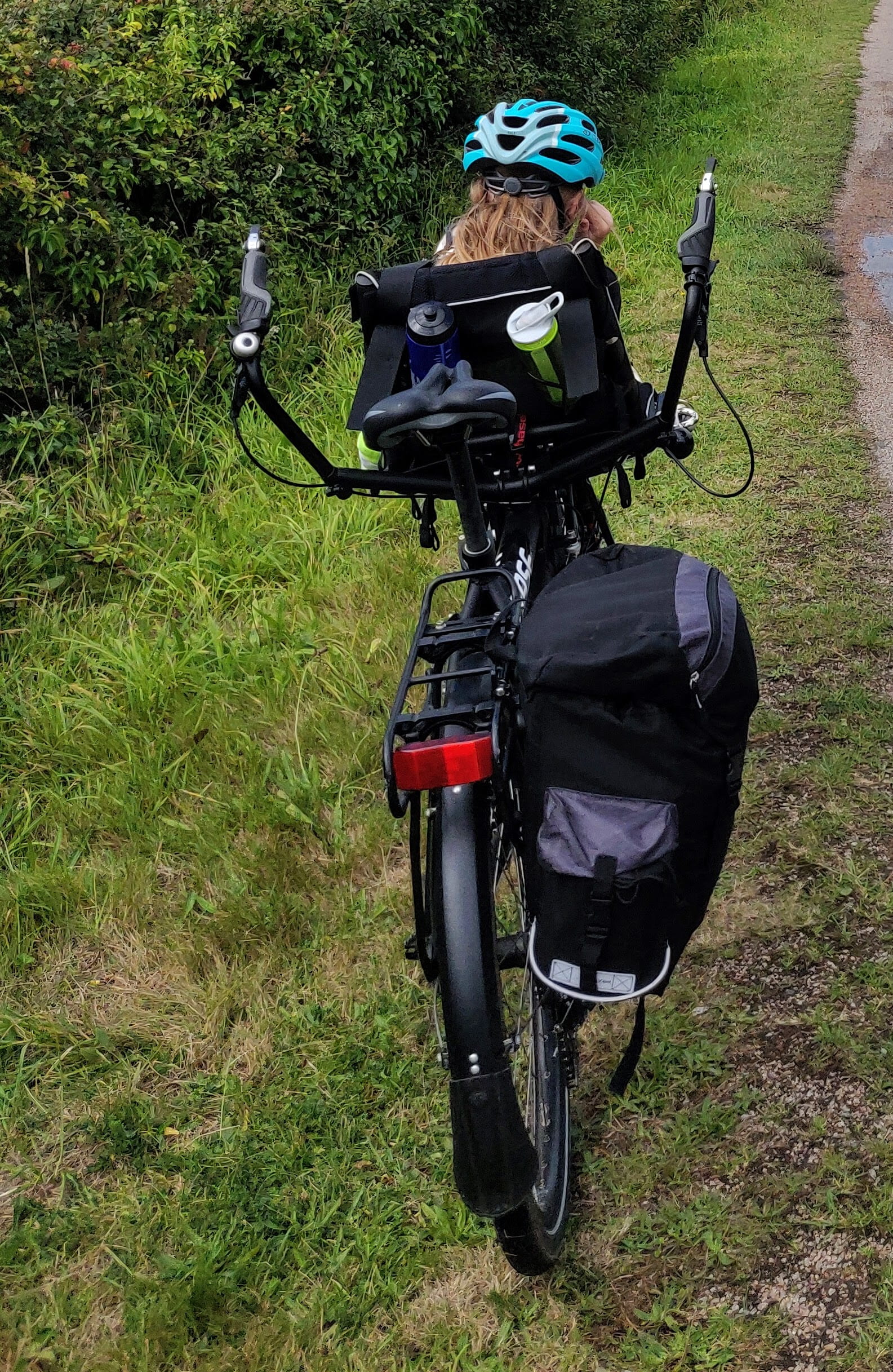
We have had a lot of fun mounting a GoPro on the front boom, I used a simple velcro strap to do it, I was worried it wouldn’t be very sturdy and would shake off, but its testament to the Pino’s stability (and front suspension forks) that this hasn’t been a problem at all.
We have also added a squeezy horn, to the recumbent chair handle, this allows Phoebe to give pedestrians a headsup we’re coming.
Future changes
I’m hoping Father Christmas will bring me a leather saddle this year. The stock saddle on the Pino is ok but not overly comfortable. Originally I looked at a classic Brooks saddle, but after some help from the awesome @cyclechat community on Twitter I have directed Santa to Spa Cycles who make leather saddles at a significantly lower cost.
I also need to get some lights, the biggest challenge will be where to mount them, there is a mount point on the front boom, but all the lights I have found so far that would fit it are dynamo driven. This is leading me down the path of temptation to get a dynamo (it will be handy for keeping phones and bike computers charged, but they are not cheap.
Finally, we are thinking of doing a big tour on it next year, either Land’s End to John O’Groats or Le Tour de Manche, we will no doubt need a cycle computer for navigation, I’ve got my beady eye on a Garmin Edge Explore. again mounting it will be a challenge.
Further Reading.
I hope this post is useful, we found these blog posts helped us when researching the Pino: